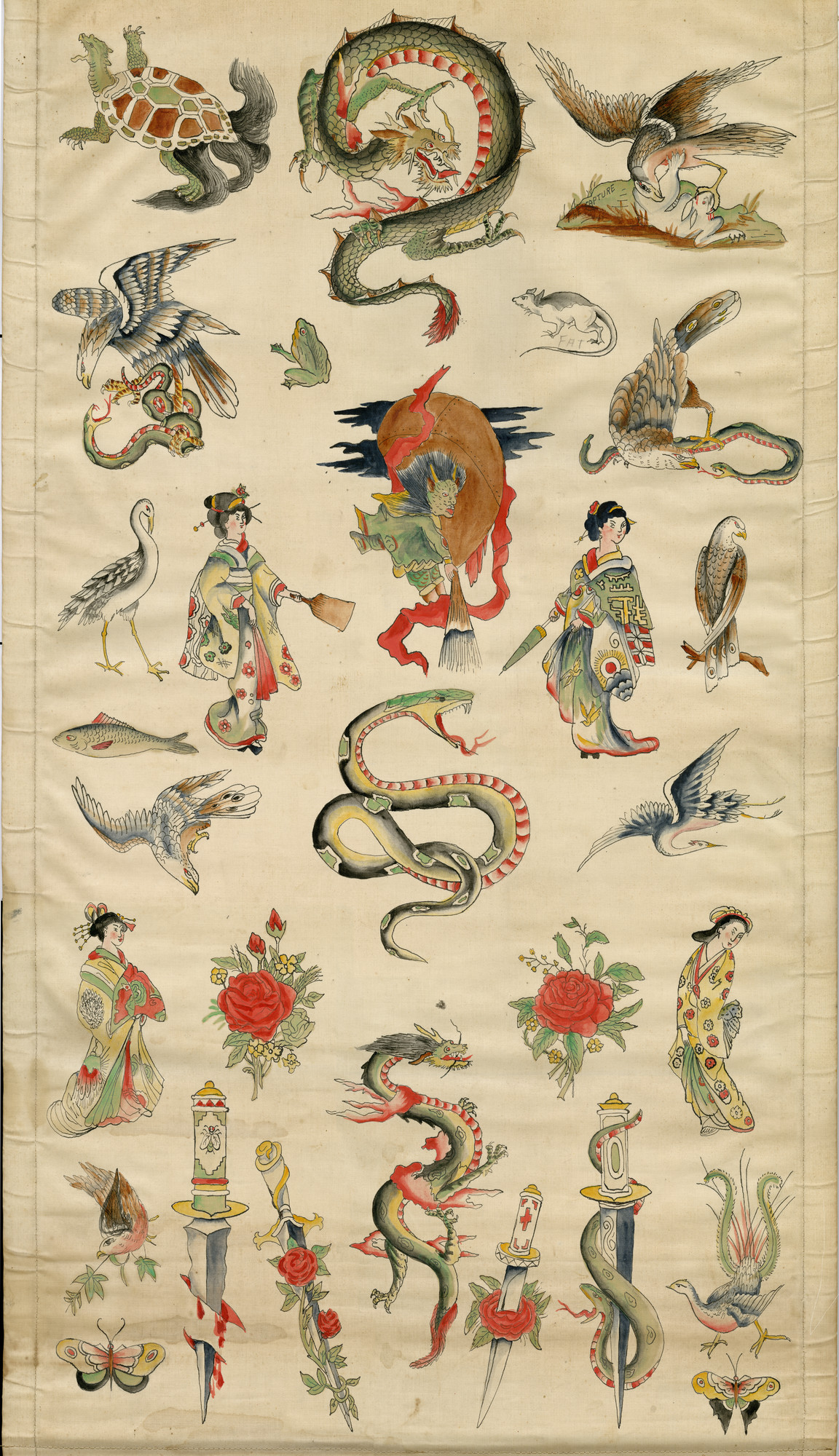 Eustis Estate
Eustis Estate
Japanese Influence on Western Tattooing
 America’s enthusiasm for Japanese tattoo designs grew out of the commercial and cultural interplay that flourished between Japan and the West after 1853, as Japan ended two centuries of isolationist foreign policy.
America’s enthusiasm for Japanese tattoo designs grew out of the commercial and cultural interplay that flourished between Japan and the West after 1853, as Japan ended two centuries of isolationist foreign policy.
Over the next several decades, Western merchant sailors and wealthy tourists flocked to the previously reclusive nation. The lush, dynamic, full-body compositions of traditional Japanese tattooing captivated Western travelers’ imaginations. Acquiring this spectacular body art—and undergoing the long, costly ordeal of being hand-tattooed by a Japanese master—became coveted status achievements for English nobles and British and American socialites of the late 19th century. Sailors also acquired Japanese tattoos while in port, and carried the new aesthetic home with them.
Japanese and Western tattoo artists swiftly adapted the traditional art form to the demands of Western popular culture: smaller, “souvenir” tattoos became the norm, and a static design repertory of dragons, geishas, animals, and flowers—largely detached from their original symbolism—replaced the heroic warriors, comic figures, and powerful gods that had so enriched traditional Japanese tattooing. By the 1890s, several Japanese tattoo artists had set up shops in Europe, Great Britain, America, and Australia, and American tattooers were offering the “latest in European and Japanese designs.”
“Japanese”-style tattoo designs remain in high demand today, as Western consumers continue to respond to their enduring mystique and special appeal.